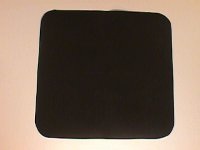I recently looked up the basics of measuring odor. I learned (from a completely unreliable source) on
Wikipedia that the following scale was used to determine odor strength in a German study on odor. While its not very scientific, it does seem like it would accurately describe odor intensity.
0 - no odor
1 - very weak (odor threshold)
2 - weak
3 - distinct
4 - strong
5 - very strong
6 - intolerable
The other thing I would be interested in is air quality. In my study I would be particularly concerned with the humidity and temperature inside the outhouse. Odors seem more intense when you experience higher humidity and temperatures; stagnant air is stinkier than moving air.
I am concerned with this because there is usually very little ventilation in campground outhouses which I assume is to keep the smell away from those camping nearby as well as to reduce the impact on the natural wildlife. This lack of ventilation also reminds me of the gnats that hover about the pit itself. All of these factors may very well be a part of what people generally think of when they describe the unpleasant odors in outhouses, and could therefore affect my survey results.
I am also interested in considering the psychological aspect of the outhouse stink, but I think I'll save those thoughts for another post.




